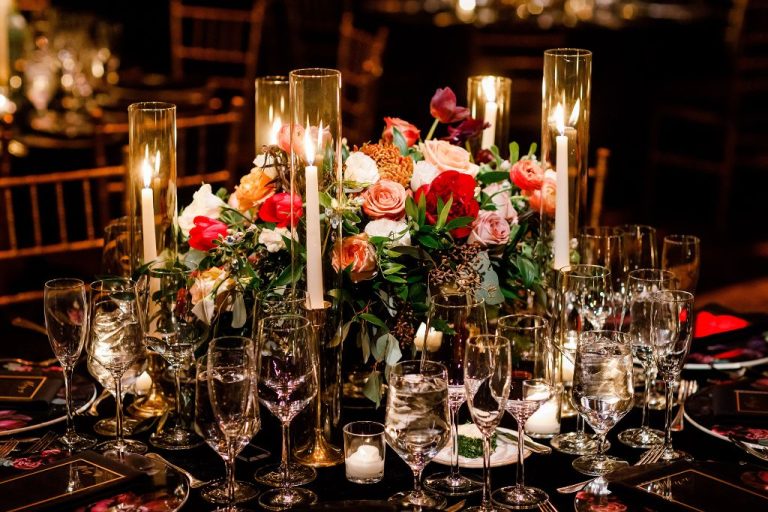Does Jasmine Smell Like Lavender?
Introducing Jasmine and Lavender Flowers
Jasmine and lavender are both flowering plants that produce fragrant blooms, but they differ in their appearance and growth habits. Jasmine is a genus of twining, vining shrubs that belong to the olive family, Oleaceae. There are over 200 species of jasmine, with star jasmine and Arabian jasmine being some of the most popular varieties. Jasmine flowers have five to nine petals and grow in clusters along the vines. Lavender is a woody, herbaceous perennial plant that is part of the mint family, Lamiaceae. There are over 40 species of lavender, with English lavender and French lavender being the most commercially grown. Lavender has narrow leaves and flowers that grow in spikes on top of long stems. The small lavender flowers typically have five petals. While jasmine and lavender both produce fragrant flowers, their growth habits, leaves, and floral structures are quite different.
The Aromas of Jasmine and Lavender
The primary aromatic compounds that give jasmine its signature scent include benzyl acetate, linalool, benzyl alcohol, and indole. Benzyl acetate provides a sweet, floral aroma, while linalool contributes a fresh, slightly spicy scent. Indole adds a deeper, muskier note. Together, these compounds create the rich, heady fragrance associated with jasmine (source).
For lavender, the main aromatic compounds are linalool and linalyl acetate. Linalool gives lavender its fresh, herbaceous, slightly citrusy aroma. Linalyl acetate adds a sweet, fruity undertone. The balance of these two compounds produces the light, floral, soothing scent lavender is known for (source).
Comparing the Smells Side-by-Side
When smelled side-by-side, there are noticeable differences between the scents of jasmine and lavender. Jasmine has a sweet, rich floral aroma often described as warm, sensual, and romantic (Source). The scent is intoxicating and lush. Lavender, on the other hand, has a fresh, herbaceous fragrance associated with relaxation and tranquility (Source). It has sharp notes of camphor and eucalyptus paired with sweet floral undertones.
Both jasmine and lavender contain floral notes, but jasmine’s scent profile leans more toward a rich, heady sweetness while lavender evokes a brighter, cooler impression. When smelled simultaneously, the differences are clear. Jasmine envelops the senses with its warm, sensual aroma, while lavender refreshes with its herbaceous yet sweet character. Though both contain floral elements, jasmine has a smooth, candied quality, while lavender is sharper and brighter.
Factors Influencing Scent
The aroma of jasmine and lavender can vary quite a bit depending on several factors. Climate, soil conditions, and cultivar all impact the scent profile of these flowers.
Jasmine and lavender grow best in warm, temperate climates. Cooler climates produce flowers with weaker aromas. The ideal climate for jasmine is tropical or subtropical, with hot summers and cool winters. Lavender thrives in dry, sunny regions with cool nights and warm days. Mediterranean climates like Provence, France are excellent for growing aromatic lavender.
Soil conditions also affect scent. Jasmine prefers rich, fertile, well-draining soil. Alkaline soils with a pH between 6.5-7.5 bring out jasmine’s sweetest fragrance. Lavender grows best in sandy, alkaline soil with a pH between 6.7-7.3. Proper drainage is key, as wet soils can rot the roots and cause the lavender to lose its scent.
Lastly, different cultivars and varieties have their own unique scent profiles. For example, French lavender (Lavandula dentata) has a subtler, softer, and sweeter aroma compared to the sharp camphorous scent of English lavender (Lavandula angustifolia). There are also over 200 cultivars of English lavender alone with different intensities, balances, and notes.
So in summary, where and how jasmine and lavender are grown significantly impacts the final scent. The ideal conditions bring out the most intense and pleasing aromas in each of these flowers.
Using Jasmine and Lavender in Perfumes
Both jasmine and lavender are commonly used in perfumes and fragrances. Jasmine is known for its sweet, exotic floral scent that evokes feelings of romance and sensuality. Lavender has a cooler, herbaceous aroma that is calming and soothing.
Jasmine is one of the most popular florals used in perfumes. According to fragrance expert Michael Edwards, jasmine appears in 82% of women’s fragrances and 33% of men’s fragrances [1]. It is prized for its ability to blend well with other notes. Jasmine acts as a bridge, connecting top notes like citrus with base notes like sandalwood or vanilla. When paired with fruits, resins, spices and woods, jasmine takes on different nuances and depths.
Lavender has been used in fragrances for centuries but became especially popular in men’s colognes in the early 20th century. It continues to be commonly used in modern perfumery. Lavender adds a herbal, aromatic twist when combined with ingredients like citrus, oakmoss and coumarin. It is both an energizing and relaxing scent. Lavender blends well with florals like geranium and rose as well [2].
Scent Inspired by Both Flowers
Perfumers often blend jasmine and lavender together to create unique hybrid scents that capture the best of both flowers. While jasmine and lavender have distinct smells on their own, combining them results in a soft, sweet, floral bouquet. The rich sweetness of jasmine balances out the herbal freshness of lavender. When blended, the scents complement each other to produce a harmonious fragrance.
One example of a popular lavender-jasmine perfume is Lavender Jasmine by Natural Niche. This perfume highlights the floral richness of jasmine essential oil while using lavender to provide an herbal backdrop. Other perfumers focus more on the lavender, adding touches of jasmine for accent notes. Hybrid scents allow the two fragrances to play off each other for a multidimensional effect.
In aromatherapy, blending a few drops of both jasmine and lavender oils can have relaxing and uplifting effects. The lavender calms nerves while the jasmine lifts mood. Using hybrid scents can create a pleasant aromatherapy experience that feels both soothing and refreshing.
Overall, hybrid perfumes and oils that combine jasmine and lavender marry the sweet florals of jasmine with the herbaceousness of lavender. The fusion creates a new layered scent that takes the best elements of both into something balanced and complex.
Psychological Effects of Each Scent
The scents of jasmine and lavender both have psychological effects on moods and emotions. However, research shows some key differences in the specific responses triggered by each fragrance.
One study found that the smell of jasmine led to increased feelings of arousal, alertness and positive mood compared to lavender or no fragrance (Higuchi et al., 2002). Jasmine was linked to stimulating effects and greater feelings of liveliness. In contrast, lavender exhibited more calming and sedating qualities.
Additional research indicates that jasmine can boost alertness during the day and performance on tasks requiring sustained attention (Sowndhararajan et al., 2016). Meanwhile, lavender may promote better quality sleep at night. The two fragrances seem to produce opposite effects related to wakefulness versus relaxation.
In summary, jasmine tends to uplift mood, increase energy, and stimulate positive emotions. Lavender has more relaxing and calming properties. Both can have benefits, but jasmine is more activating while lavender aids tranquility.
Aromatherapy Benefits
Both jasmine and lavender essential oils are commonly used in aromatherapy for their therapeutic effects on the mind and body. Studies have shown that inhaling jasmine essential oil can help reduce anxiety, depression, and stress (1). The sweet, floral scent of jasmine is uplifting and soothing, promoting a sense of optimism and confidence. Lavender essential oil is also renowned for its calming, relaxing properties. The refreshing herbal aroma of lavender can relieve tension, anxiety, irritability, and insomnia (2).
In aromatherapy massage, a blend of jasmine and lavender oils provides the best of both worlds. Jasmine oil enhances mood while lavender oil promotes relaxation. Using these oils together creates a balanced, therapeutic effect ideal for massage. The combination not only smells wonderful but also improves mood and eases muscle tension (3).
Both jasmine and lavender essential oils also have topical benefits for skin and hair health. Jasmine oil has antioxidant properties that help tone, moisturize, and rejuvenate skin. Applying jasmine oil can improve elasticity and reduce the appearance of scars and stretch marks. Lavender oil also moisturizes and nourishes skin while having antibacterial and anti-inflammatory properties (4, 5).
Sources:
(1) https://www.healthline.com/health/jasmine-essential-oil
(2) https://www.airoasis.com/products/lavender-essential-oil
(3) https://www.ncbi.nlm.nih.gov/pmc/articles/PMC3612440/
(4) https://www.airoasis.com/products/jasmine-essential-oil
(5) https://www.medicalnewstoday.com/articles/320362
Culinary Uses
Both jasmine and lavender flowers can be used to infuse flavor and aroma into foods and beverages. Jasmine is commonly used to scent teas, particularly green and white teas. The delicate, sweet fragrance of jasmine pairs beautifully with tea leaves. For example, chai tea lattes are sometimes made with jasmine tea as the base to lend a floral aroma (source). Lavender also works well for infusing into teas, adding a soothing herbal quality.
In cooking, jasmine and lavender flowers can provide subtle floral notes to both savory and sweet dishes. Jasmine rice is popular in South Asian cuisine, made by steaming rice with jasmine flowers or extract to give it a distinctive scent. Lavender pairs well with grains like rice too, as seen in this lavender-turmeric jasmine rice recipe (source). Both jasmine and lavender work nicely in desserts, adding a light sweetness – for example lavender cupcakes or jasmine ice cream. When cooking with these flowers, use a gentle hand so the flavor remains delicate.
In summary, jasmine and lavender can both enhance the flavor of teas, rice dishes, and sweets when used thoughtfully in the kitchen.
In Summary: Similarities and Differences

Both jasmine and lavender have sweet, floral scents, but there are some notable differences between them. Jasmine has a warmer, richer scent that is often described as sensual or romantic. Lavender has a cooler, fresher, more herbaceous aroma that is considered calming and relaxing.
While jasmine and lavender may seem similar at first sniff, jasmine tends to be more full-bodied, intense, and heady compared to the more subdued lavender. Jasmine also has fruity undertones, while lavender leans more herbal. In direct comparison, jasmine stands out as the more dramatic, narcotic floral.
These differences in aroma translate to differences in use cases. Jasmine is often preferred for perfumes, aromatherapy blends, and bedroom fragrances meant to promote relaxation or romance. Lavender is also used in perfumes and aromatherapy but is more commonly associated with tranquility, purification, and healing.
Both flowers can provide therapeutic benefits, but jasmine is considered more uplifting and stimulating while lavender is known for its calming, soothing properties. When used in culinary applications, jasmine flavors teas while lavender is used more for desserts and baked goods.
While they share a floral scent profile, jasmine and lavender have distinct differences that make them uniquely suited to certain uses and applications. However, they both add pleasant fragrance from nature that can enhance mood, ambiance, and wellbeing.



